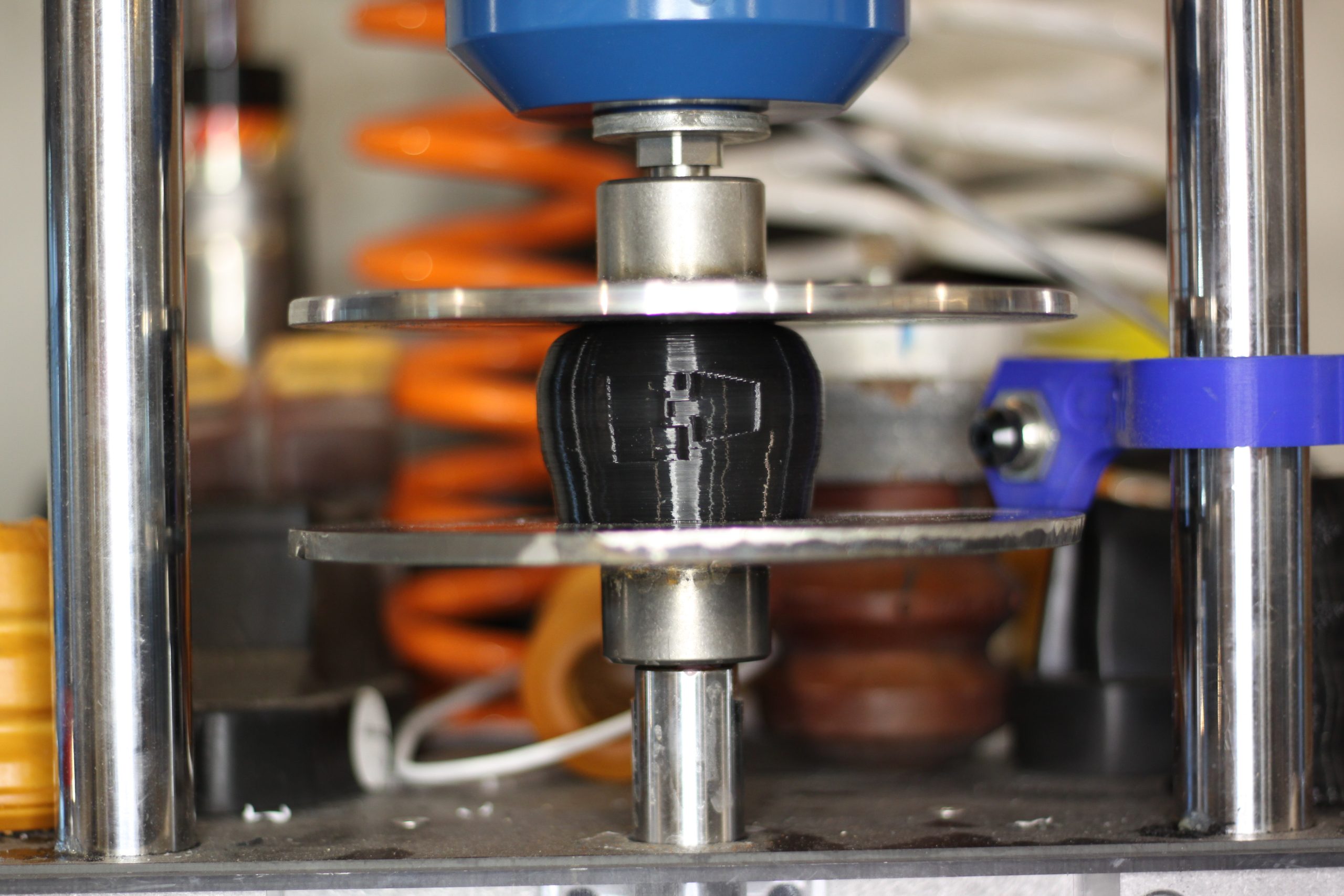
Have you ever been driving along on a trail, when all of the sudden you hit a rut that turns out to be a little deeper than expected? Then you cringe as you hear the rear axle slam up against the vehicle and you swear something broke. Maybe you do a lot of hauling with your 4Runner and you bottom out from potholes on the road due to all the extra weight of a trailer.
Well, that contact you feel is your rear axle bottoming out and hitting the rear bump stops.
The sole purpose of them is to prevent metal-on-metal contact when bottoming out. They don’t provide any damping or cushioning of the suspension, they are only a fail-safe in case you bottom out. In order to prevent harsh contact with the stock bumps, you will need to upgrade to aftermarket ones. Otherwise, those hard-hitting bumps could end up causing some serious damage to your vehicle.
In this article, we’ll be covering the different types, the materials used, the different applications for aftermarket options, and some of the best brands to look at when upgrading.
Table Of Contents
Types
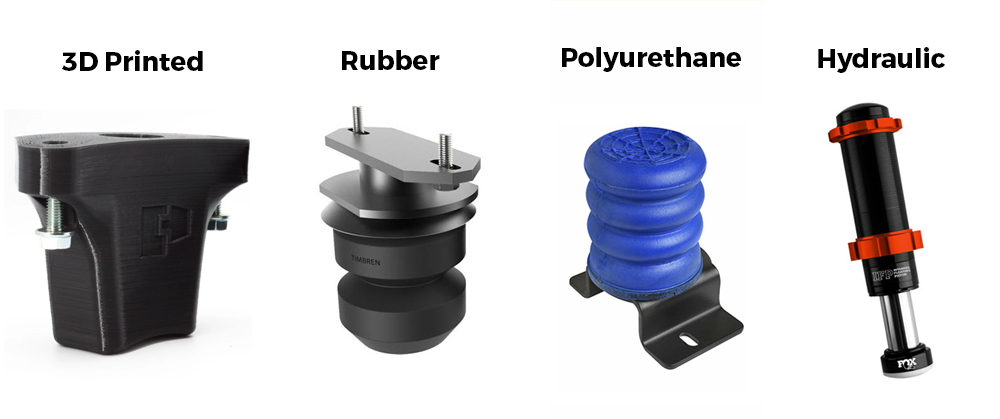
There are four basic types:
- Rubber
- Micro-cellular urethane
- Hydraulic
- 3D Printed
The first two listed are the most common and the most practical for the majority of the community. For those that take their off-roading to the next level, such as a pre-runner or high-speed offroad style build, the hydraulic bump stop is probably going to be the way to go. And for those looking for a good all-around bump without breaking the bank, the 3D Printed option might be the best for you.
1. Rubber: All-Around

There are two different types of rubber bump stops that are popular on the market right now.
One is a completely natural rubber product and the other is called dual-durometer rubber. The natural rubber bump stop is natural rubber from top to bottom with a hollow core. The dual durometer rubber, which means it is made from two rubbers extruded together to form one piece, looks almost like a larger/taller version of OEM. Both types of rubber stops are maintenance-free, allowing you to install them and forget about them. Although they are different designs and slightly different makeup, they both provide similar benefits and functions.
Both styles work to absorb the energy from the vehicle pressing down onto the rear axle or vice versa. The further the bump is compressed, the more resistance it gives which in turn will help to push the frame and axle back apart. The rubber material allows for a cushioning effect instead of a hard stop like the factory ones that are typically made from polyurethane. All of this will result in a smoother ride and no more harsh bottoming out.
Rubber ones are much taller than factory bumps. They, in turn, will act as a helper spring when towing, providing supplemental resistance to the rear springs. This results in a safer and less bouncy towing experience.
This is a great all-around bump stop.
Pros:
- Maintenance-free
- Part for part replacement
- Easy installation
- Provides better stability on and off-road
- Improves towing experience
Cons:
- Non-customizable
- Not designed for high-speed use
2. Micro-Cellular Polyurethane: Towing
The next variation is made from micro-cellular urethane.
This material is essentially a really firm foam and has very similar properties to the rubber bump stops. As the it is formed, there are millions of tiny air pockets created within the material. All of those air bubbles allow for the compression of the foam. This is how they can make a variety of different densities and strengths. The more air inside, the less resistance; less air equals more resistance. This type of bump stop is also maintenance-free, which is an added bonus. It is always nice to have one less thing to worry about.
Just like the rubber, these urethane bump stops will absorb the energy created by a bump in the road and spring itself back into place. It also provides a progressive spring rate as the natural rubber. The more the material is compressed, the stronger the resistance and spring effect will be.
Urethane bump stops are also much taller than stock. They are also typically taller than the rubber options. This again allows it to act as an additional spring in the rear to help hold up the vehicle under the weight of a trailer or any load in general such as a heavy build with aftermarket armor, lots of gear, or both.
These are not typically meant for off-roading and are more suited for towing. If towing is your primary objective, these are the bump stops for you.
Pros:
- Maintenance-free
- Part for part replacement
- Easy installation
- Provides better stability on and off-road
- Improves towing experience
- Different resistance options available
Cons:
- Not designed for high-speed use
3. Hydraulic: Off-Roading
Hydraulic bump stops are the crème de la crème when it comes to upgrading for off-roading.
They are designed like the shock struts you already have in your suspension, just shorter in height and with a much wider inner shaft. They are usually filled with lightweight shock oil and nitrogen and will function similarly to how standard shocks work. Hydraulic bumps can vary in length and diameter and the nitrogen inside can be fine-tuned to provide different valving (or resistance).
Like the other two types mentioned before, hydraulic bump stops will cushion the rear axle as it rises, but it does so in a couple of stages. The initial resistance comes from the compression of the nitrogen. This will be somewhat light at first compared to a stiffer response in the mid-range of compression. The final third of the shaft stroke will be where the piston is forced through the shock oil. The bulk of the energy absorbed will occur in this end range.
Hydraulic stops are primarily designed for those that enjoy higher speed off-roading, such as desert riding and racing. Therefore, the design is better suited for those environments and not so much for towing, although there will be benefits provided over stock. Two downsides to hydraulic bump stop compared to rubber and urethane are that they are much more expensive and they will require maintenance to ensure they are functioning at their peak level. Another thing to note, improper installation could cause the rest of your suspension to ride worse, or even cause damage to it or your vehicle.
Pros:
- Provides greater stability off-road
- Great for high-speed off-roading
- Customizable to your needs
- Different resistance options available
Cons:
- More expensive
- Typically requires professional installation
- Requires maintenance
4. 3D Printed: All-Around
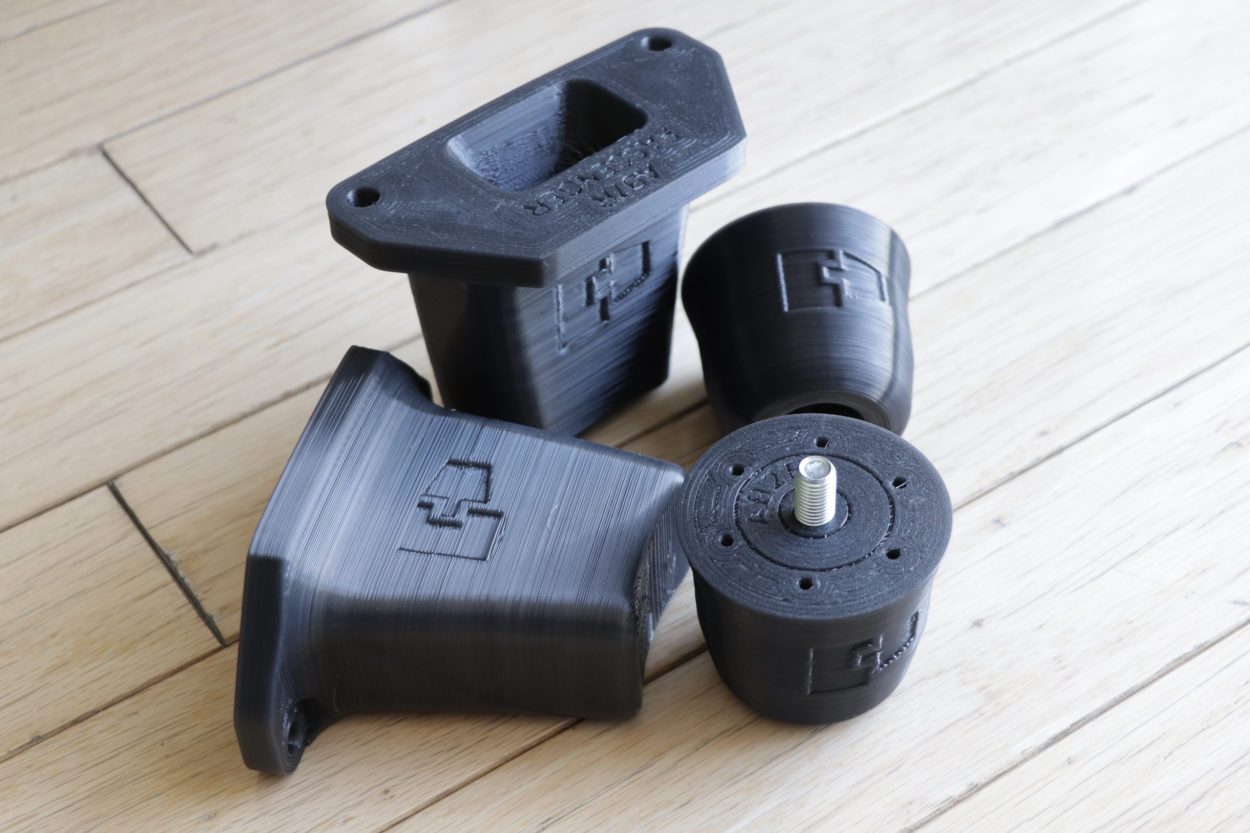
The latest evolution in bump stop technology is 3D-printing. This innovation allows for unparalleled precision and customization, offering features that rival high-end hydraulic and air bump stops at a fraction of the cost.
Using fused pellet fabrication with hydrolytically stabilized thermoplastic polyurethane (TPU), 3D-printed bumps offer superior durability over traditional molded counterparts. Their unique design enables variable stiffness, allowing for a soft initial activation followed by increased resistance at higher compression speeds. Compression damping ports further enhance performance by blocking high-speed forces, increasing internal pressure to improve bottom-out protection.
These bump stops have proven to be highly effective in real-world testing, eliminating the jarring sensation of bottoming out while maintaining affordability and ease of installation. Whether for rock crawling, overlanding, or daily driving, 3D-printed bumps provide a modern solution for protecting your suspension and improving ride quality.
Perry Parts has somewhat revolutionized this product and has made some incredible movement in the space. It’s less than half (and sometimes more) the price of other bumps and provides a great all-around product for off-roading, overlanding, and light towing. This product has been all over Instagram and customers have nothing but good things to say about it. Take a look at the PerryParts technical overview here.
Pros:
- Customizable design for specific applications
- Superior durability using advanced TPU materials
- Progressive damping for improved bottom-out protection
- Cost-effective compared to hydraulic alternatives
- Easy installation
Cons:
- Newer technology with limited long-term field data
- Performance may vary based on print quality and material choice
Functions
As mentioned earlier, there are two main reasons to upgrade from your stock bump stops to aftermarket ones: towing and off-roading. Below I’ll break both of them down to explain why and how these will change the game for you.
Towing
You don’t have to be an avid off-roader or rock crawler to see some huge benefits from aftermarket bump stops.
If you tow frequently with your 4Runner, upgrading them can reduce rear-end sag and improve ride quality. As you load your trailer, the rear drops, and bumps in the road amplify the see-sawing effect. Aftermarket rubber or micro-cellular urethane versions add resistance, reducing bounce and providing a smoother ride.
With a lightly loaded trailer (1,000-1,200 lbs), SuperSprings bump stops kept my 4Runner’s rear 1/2” higher than stock. While not drastic, it proves aftermarket bump stops enhance towing stability. However, they do not increase your vehicle’s towing capacity – always follow the manufacturer’s GVWR.
For towing, rubber or micro-cellular urethane bump stops offer the best value. Hydraulic bump stops also improve comfort but at the higher cost and labor required. A quality set of rubber or urethane costs a few hundred dollars and takes about 30 minutes to install. While air ride suspensions provide more advanced towing assistance, they are expensive, complex, and can fail unexpectedly.
Off-Roading
Off-roading puts immense strain on your suspension, which is why many upgrade shocks and coils early on for added lift, better travel, and improved control. These upgrades help keep your wheels on the ground for better traction, but to maximize their effectiveness, you’ll want to add a set of bump stops.
Your suspension works hard to keep your vehicle stable and absorb impacts from rough terrain. Shocks and springs manage up-and-down travel while providing resistance at full compression, helping to press your wheels back onto the ground for traction.
Aftermarket bump stops enhance this process by smoothing out suspension movement, making rough rides more controlled and comfortable. They also reduce strain on your suspension by absorbing some of your vehicle’s weight, ultimately extending the lifespan of your components.
Brands
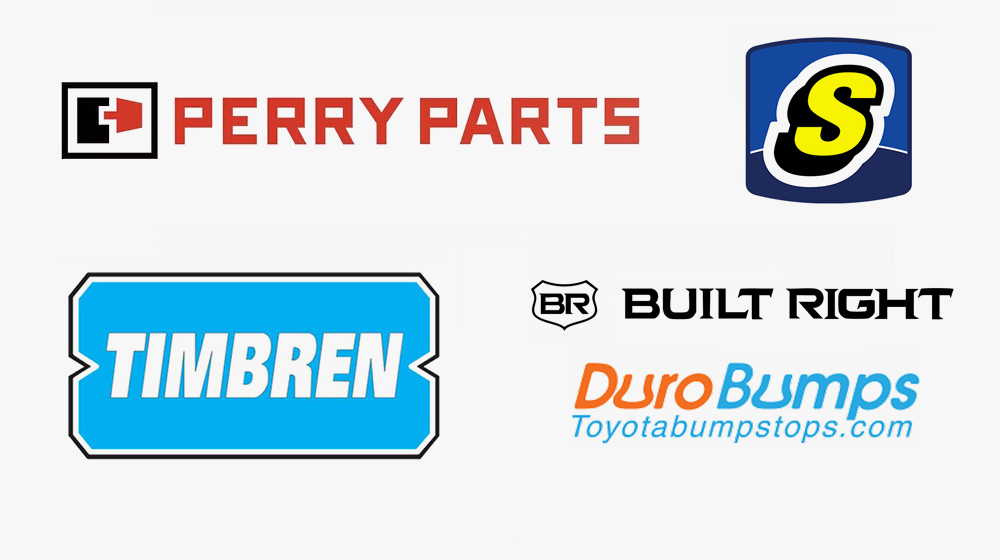
Five of the biggest names in aftermarket bump stops are Perry Parts, Timbren, SuperSprings, Built Right Fabrication, and DuroBumps.
These brands use 3D printing, rubber, or polyurethane to manufacture their products. I won’t be covering hydraulic bump stops here, as they cater to a more niche market—that’s a topic for another day.
Most major suspension companies, such as King, Fox, ADS, Icon, and Bilstein, offer hydraulic options. However, these brands provide a similar function using different materials.
Despite their brand differences, they share three key characteristics:
- Progressive Damping – As the material compresses, resistance increases, providing smoother bottom-out control.
- Maintenance-Free – Once installed, they require no upkeep—no cleaning, lubrication, or rebuilding.
- Affordable – A pair from these brands costs between $150 and $260, with Perry Parts being the most affordable and well-rounded option.
If you’re considering hydraulic bump stops, expect to pay that price per bump stop. Below, I’ll break down each brand and its specific offerings.
Perry Parts
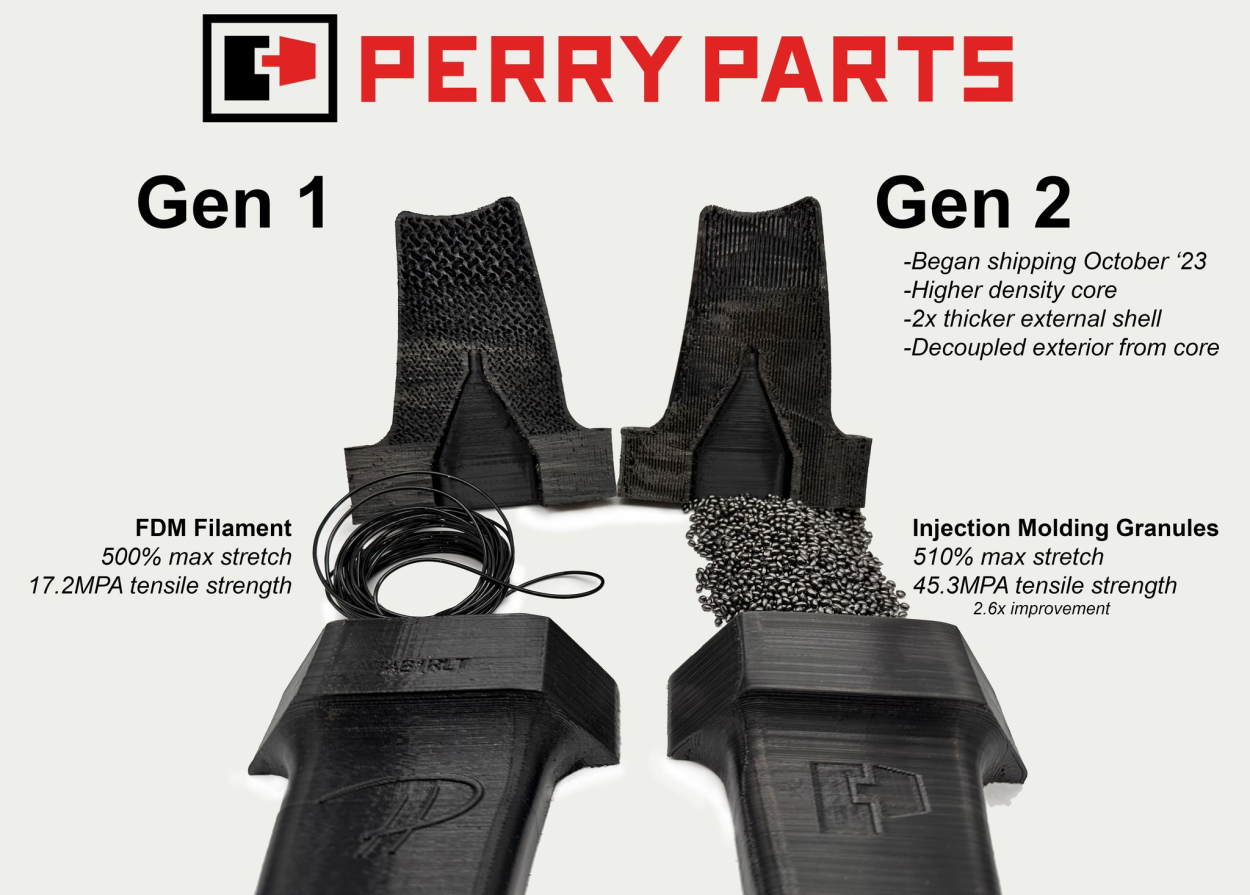
Find It Online:
When it comes to aftermarket bump stops, Perry Parts is setting a new industry standard. Not only is it the most affordable option among leading brands, but Perry has also invested heavily in engineering, testing, and vehicle-specific designs – especially for the Toyota market.
Unlike many competitors that produce universal bump stops, Perry Parts designs each bump stop to match the exact specifications of the vehicle it’s built for literally testing units on OEM lower control arms. This means Toyota owners get a product that perfectly integrates with their suspension system, rather than settling for a generic fit.
Perry Parts doesn’t just manufacture bump stops – they engineer them with precision (after all the founder was an engineer for Apple prior to jumping into the market). Every design undergoes rigorous benchmarking and tuning on a suspension dyno, with third-party validation to back up their claims. While most brands rely on static spring rate tests, Perry Parts is the only manufacturer using industry-leading dynamic testing to measure real-world damping performance.
Using industrial-grade polymer that’s 20% stronger than cast polyurethane, Perry Parts bump stops are built to handle extreme off-road abuse. They’ve been cycle-tested beyond 100,000 repetitions—far exceeding the limits that many competitors test for a single cycle.
Perry Parts’ proprietary compression damping technology provides smoother bottom-out control, more consistent rebound, and superior suspension protection. This translates to improved ride quality, better handling, and reduced impact harshness compared to traditional rubber or polyurethane bump stops.
- Most Affordable – The best price-to-performance ratio in the market.
- Toyota-Specific Design – Precision-engineered for optimal fit and function.
- Industry-Leading Testing – Suspension dyno-validated, not just static-rated.
- Superior Material Strength – 20% stronger than cast polyurethane.
- Compression Damping for Smooth Ride – Advanced tuning for maximum performance.
Perry Parts isn’t just another bump stop manufacturer—they’re redefining what’s possible with cutting-edge engineering and a commitment to real-world performance. If you want the best all-around option for your Toyota, Perry Parts should be at the top of your list. Especially if you want bang for your buck.
DuroBumps

Find It Online:
DuroBumps is a USA company based out of Arizona. The founder, Curtis Glenn, was dissatisfied with the options available to him for his 3rd Gen 4Runner so he took his experience in the rubber and plastics industry and turned it towards creating his own bump stop. When he finalized his prototype, he advertised them on a forum and things took off from there. They now offer bump stops for 4Runners, FJ Cruisers, Tacomas, Tundras, and some Lexus models.
The DuroBump bump stop is made from dual durometer rubber that provides progressive damping upon impact. DuroBumps are the most similar in appearance to stock (in my opinion) because they appear to be a harder, more solid rubber. That’s because the rubber is actually two types of rubber combined into one piece. The design places a firmer rubber at the base of the bump stop and part of the main body, and a softer rubber on the end, so that they both work together to provide the damping effect.
DuroBumps offers a simple solution, but under heavy use, a few users have seen failures where the rubber separates from the metal mounting plate. BuiltRight saw this as an opportunity and took the manufacturing process further by redesigning the bond between the urethane and metal washer, using a two-tiered machined billet design with casting holes to ensure a permanent bond. With a carefully tested 80-durometer, non-rebounding urethane compound and a no-questions-asked durability warranty, BuiltRight stands out as a more robust and long-lasting option.
If you’re looking at DuroBumps, you may want to consider the BuiltRight option as it’s the same material, just manufactured with some upgrades.
Timbren
Find It Online:
Timbren Industries is a well-known brand based in Canada that specializes in off-road bump stops and trailer suspension systems. While they get plenty of customers purchasing their off-road bump stops, they have a wide range of trailer suspensions as well as their signature SES, or Suspension Enhancement Systems. These SES bump stops are very similar to their off-road bump stops, but are offered for a wide range of vehicles and are only intended to enhance the suspension systems for daily driving and towing.
The Timbren Active Off-Road bump stop is made entirely of natural rubber with the exception of the mounting plate. They are designed with a hollow core to allow more give when absorbing the energy from those harsh bumps. A big perk of this brand is that they come with a lifetime warranty and satisfaction guarantee. That’s right, a LIFETIME warranty. You don’t see too many of those on parts that work this hard.
SuperSprings International
Find It Online:
While they’ve ventured into the off-road market and are really gaining traction, they have a large variety of products aimed at work vans, RVs, trailer applications, and more. They also offer a product called Coil SumoSprings that are designed to give a boost to coil capacity by 15-30%.
All of SuperSprings’ products are made of micro-cellular urethane. They can vary in density to provide different levels of resistance.
The 4Runner applications are part of their product line called SumoSprings, and they are offered in two different variations for us. One is for lighter loads, rated at 1,400 lbs at 50% compression (blue) of the bump stop, and another for heavier loads, rated at 1,800 lbs at 50% compression (black). I have the lighter version installed on my 4Runner because I don’t have additional weight from bumpers or any built-in storage, and I don’t do any heavy towing. If you are towing frequently, the SumoSprings 1800lb black version is what you want to consider. If your 4Runner is a daily driver, and you occasionally go off-road, then the 1400lb blue version is for you. By installing either the black or blue SumoSprings, you will see a reduction in body roll which is a huge plus for most owners. Before SumoSprings, you would need to install a full airbag system to see a similar performance enhancement.
They are great for daily-driven 4Runners, however, they are more suited for towing. Read this recent review on SumoSprings.
Final Thoughts
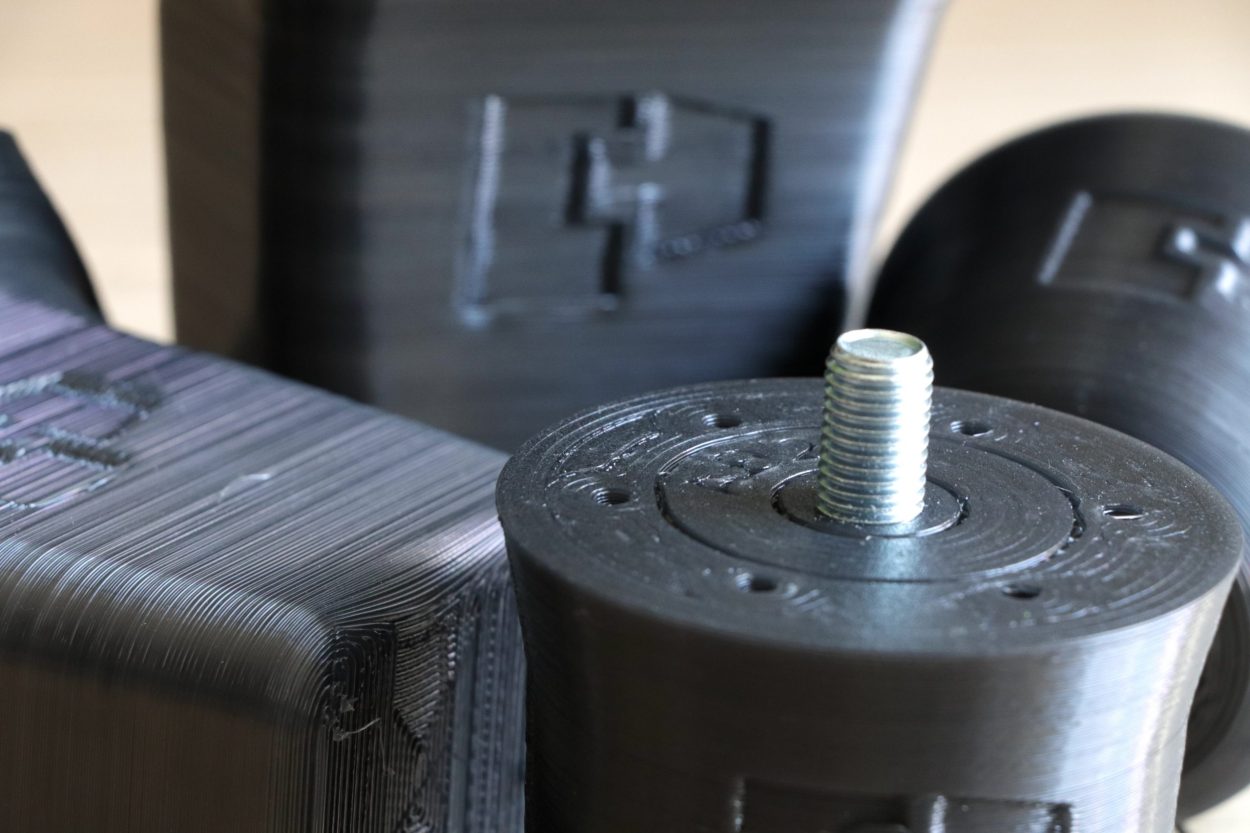
Whether you spend time on the trails, are frequently towing with your 4Runner, or just use it as a daily driver, your ride will greatly benefit from replacing the stock bump stops with one of the bump stops covered in this article. Even a daily driver is going to encounter potholes, manhole covers, or road work that will jolt the whole vehicle. They all will greatly improve the ride quality and stability without breaking the bank.
One of the great things about the brands highlighted is that all of their products are super simple to install for any skill level.
In less than an hour you can feel more comfortable and secure while towing, and more smooth and stable on or off the road. Remember, the stock bump stop is your vehicle’s last defense to prevent two heavy metal objects from crashing together. New bump stops won’t make you feel like you’re driving on a cloud. But I can tell you that after driving with my aftermarket ones installed, the ride is much smoother and I no longer experience the harsh jolts.
At the end of the day, this is an affordable, maintenance-free upgrade that will greatly improve the ride quality and help extend the life of your suspension.







Would I benefit from having rear bump stops when I already have HD springs made for towing? The springs are stiffer and work well for my towing needs (18ft bass boat and off road trailer. Both are under 3000 pounds)?
Has anyone checked out Perry Parts Bump stops? Are there any posts about them?